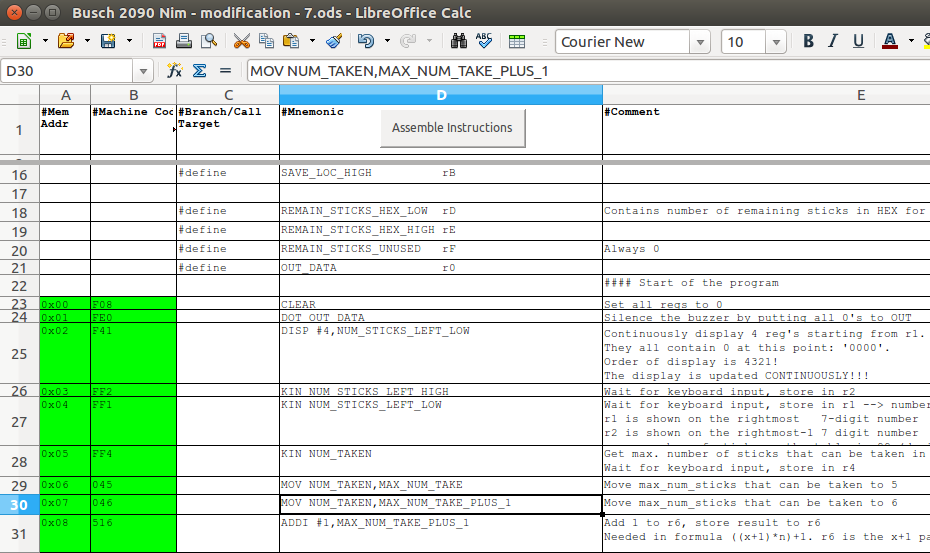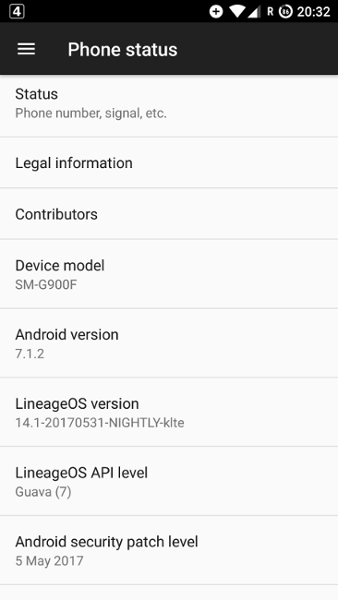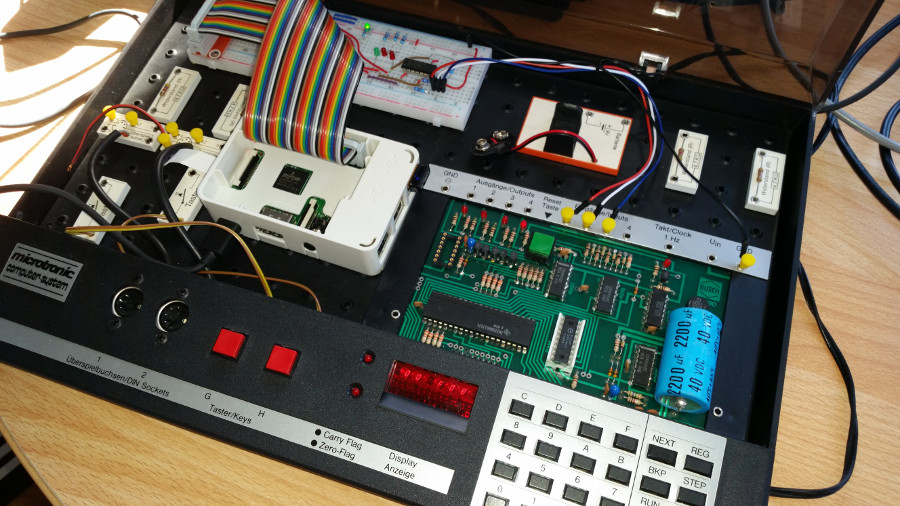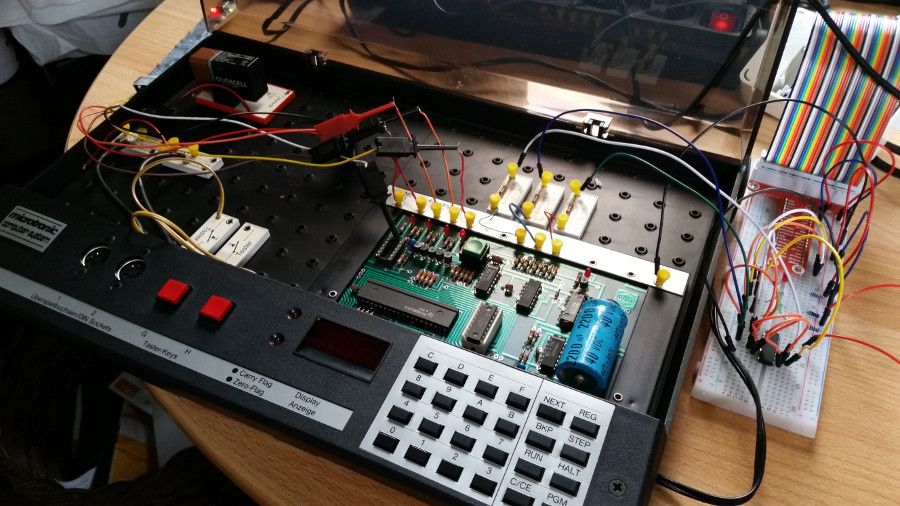So far I was really wondering why the industry is doing 5G in the first place for frequency bands below 5 GHz and why a new core network architecture is required and useful!? At last I have now found one interesting answer for the core network side: Let’s revamp security and privacy and make it much better!
Author: Martin
An Assembler for the Busch 2090
 Today another post in my popular series on historical computing. When the Busch 2090 microcomputer learning kit came out in 1981 it required the user to write programs on paper, translate the instructions to machine code and to calculate memory addresses and branch destinations himself. In an iterative development process this is more than just a bit painful as memory addresses of branch destinations change all the time as instructions are added and removed. Now that I’ve put my Busch 2090 tape emulator to good use I decided I needed an Assembler that does these things for me. As none exists so far, I decided to program one myself.
Today another post in my popular series on historical computing. When the Busch 2090 microcomputer learning kit came out in 1981 it required the user to write programs on paper, translate the instructions to machine code and to calculate memory addresses and branch destinations himself. In an iterative development process this is more than just a bit painful as memory addresses of branch destinations change all the time as instructions are added and removed. Now that I’ve put my Busch 2090 tape emulator to good use I decided I needed an Assembler that does these things for me. As none exists so far, I decided to program one myself.
Book Review – Just For Fun – Linus Torvalds Auto-Biography
 15 years ago back in 2002, Linux Torvalds wrote his auto-biography together with David Diamond and the book has been on my reading list for quite some time now. Recently I finally got around to it.
15 years ago back in 2002, Linux Torvalds wrote his auto-biography together with David Diamond and the book has been on my reading list for quite some time now. Recently I finally got around to it.
Written back in 2002, the book itself is now a historical artifact and it’s interesting to read it from a 2017 perspective when, compared to back then, Linux seems to have grown into almost any electronic device that has more than a few transistors inside. But even back then, Linus already predicted that Linux will be in mobile phones. I guess not many people could imagine that in 2002. Also at the time, the Linux kernel was ‘just’ 10 years old and still very different from what it is today.
Continue reading Book Review – Just For Fun – Linus Torvalds Auto-Biography
EU Roam Like Home – Data Limits
After being very happy in my previous post on EU Roam Like Home coming into effect this is the follow up to take a look at the fine print. Back in September last year I analyzed the suggestions made by network operators of how to ensure that a subscription (pre-paid and contract) bought in one country is not permanently used in another to circumvent different pricing structures due to business models and network build-outs. The suggestions made then would have been quite limiting for my usage scenarios. Fortunately, however, things have changed somewhat in the meantime.
LineageOS on a Samsung Galaxy S5
 CyanogenMod is history, LineageOS is the new kid in town. So far, however, I’ve shied away from upgrading my Samsung S5, and to tell the truth, I didn’t even upgrade Android 5 to 6 while CyanogenMod still existed. To high the pain for too little gain. But now Android 7 is the mainstream and the platform gets hit regularly by security issues that need to be patched to stay on the save side. No excuses anymore. So one day I decided to bite the bullet and to update by starting from scratch and do a few things differently this time. Little pain would have been involved if I had done the straight forward thing. However, since I installed from scratch I wanted to get a more secure and private setup. That proved to be much more difficult than I thought and I’m afraid I did not quite succeed with everything.
CyanogenMod is history, LineageOS is the new kid in town. So far, however, I’ve shied away from upgrading my Samsung S5, and to tell the truth, I didn’t even upgrade Android 5 to 6 while CyanogenMod still existed. To high the pain for too little gain. But now Android 7 is the mainstream and the platform gets hit regularly by security issues that need to be patched to stay on the save side. No excuses anymore. So one day I decided to bite the bullet and to update by starting from scratch and do a few things differently this time. Little pain would have been involved if I had done the straight forward thing. However, since I installed from scratch I wanted to get a more secure and private setup. That proved to be much more difficult than I thought and I’m afraid I did not quite succeed with everything.
Thalys Improves On-Board Internet Access – Somewhat
5 years ago I wrote an obituary on the Thalys train on-board Wifi system. After a brilliant start in 2007 the system was working well for a while before it more and more became unusable. Fortunately, while cellular coverage on the German part along the tracks was and still is lousy, mobile network operators in Belgium and France set up 3G and later LTE coverage close to the tracks. As a result I stopped using on-board connectivity and rather connected to the outside network which works well even at speeds of 300 km/h. When I recently took a trip to Paris, however, I noticed that Thalys has started advertising a ‘new and improved’ on-board Internet and that the classic satellites domes on the top of the trains are gone. So I gave it another try to see if things had really changed.
Continue reading Thalys Improves On-Board Internet Access – Somewhat
EU Roam Like Home Has Started Today – And I Have Flipped The Switches
 Today, 15 June 2017, is the day ‘EU Roam Like Home’ has come into effect. While my personal contract has had an EU option with additional benefits for quite some time now, we have a number of additional SIM cards in the family we use on a daily basis when we travel to different countries. So far, data roaming on those SIMs was simply switched off. Also, we use these SIM cards so people in other countries can call us when we are not in the country. With roaming now being included it was time to flip the data roaming switch on. Also I had to make some changes as one network operator we have a SIM card from is refusing to play along the EU rules. No money from us anymore…
Today, 15 June 2017, is the day ‘EU Roam Like Home’ has come into effect. While my personal contract has had an EU option with additional benefits for quite some time now, we have a number of additional SIM cards in the family we use on a daily basis when we travel to different countries. So far, data roaming on those SIMs was simply switched off. Also, we use these SIM cards so people in other countries can call us when we are not in the country. With roaming now being included it was time to flip the data roaming switch on. Also I had to make some changes as one network operator we have a SIM card from is refusing to play along the EU rules. No money from us anymore…
Continue reading EU Roam Like Home Has Started Today – And I Have Flipped The Switches
Emulating a Busch 2090 Tape Interface – Part 2
 After having found out how I can make my vintage 1981 Busch 2090 microcomputer board output a program from memory to the 2095 cassette interface board I was hoping that the knowledge I had gained during the process would help me to reach my ultimate project goal which was to send a 2090 program from a Raspberry Pi via its GPIO ports to the original microprocessor board so I can execute it there. At the beginning it looked like a straight forward process but one thing kept me on the edge for quite a while.
After having found out how I can make my vintage 1981 Busch 2090 microcomputer board output a program from memory to the 2095 cassette interface board I was hoping that the knowledge I had gained during the process would help me to reach my ultimate project goal which was to send a 2090 program from a Raspberry Pi via its GPIO ports to the original microprocessor board so I can execute it there. At the beginning it looked like a straight forward process but one thing kept me on the edge for quite a while.
Continue reading Emulating a Busch 2090 Tape Interface – Part 2
Emulating a Busch 2090 Tape Interface – Part 1
 Back in 2013 I finally managed to get hold of a Busch 2090, a historical microcomputer learning kit I always wanted as a teenager but couldn’t afford. Apart from its historical value to me it is still a great tool to learn and better understand how computers work. At the time, Busch also sold a separate tape interface board with which one could load and store programs to ordinary music cassettes which made experimenting with larger programs a lot easier. Unfortunately the Busch 2090 I bought didn’t have one and it is extremely rare to find one on eBay. While I didn’t particularly mind so far, I’m playing with the thought of participating at the VCFB 2017 in Berlin later this year where it would be great to have the ability to quickly load and demonstrate different programs. The more I thought about it the more I got interested and decided that instead of trying to buy the historical hardware I would find out if I could build a hardware emulator with a Raspberry Pi. This blog entry is part 1 of the story around that project. If you are interested in historical computing or reverse engineering an interface to build an emulator hardware and software for it, read on.
Back in 2013 I finally managed to get hold of a Busch 2090, a historical microcomputer learning kit I always wanted as a teenager but couldn’t afford. Apart from its historical value to me it is still a great tool to learn and better understand how computers work. At the time, Busch also sold a separate tape interface board with which one could load and store programs to ordinary music cassettes which made experimenting with larger programs a lot easier. Unfortunately the Busch 2090 I bought didn’t have one and it is extremely rare to find one on eBay. While I didn’t particularly mind so far, I’m playing with the thought of participating at the VCFB 2017 in Berlin later this year where it would be great to have the ability to quickly load and demonstrate different programs. The more I thought about it the more I got interested and decided that instead of trying to buy the historical hardware I would find out if I could build a hardware emulator with a Raspberry Pi. This blog entry is part 1 of the story around that project. If you are interested in historical computing or reverse engineering an interface to build an emulator hardware and software for it, read on.
Continue reading Emulating a Busch 2090 Tape Interface – Part 1
LTE 700 MHz In Action In Paris As Band 28
When I was in Paris recently I was very much surprised to see that Free Mobile has an LTE carrier in the European Digital Dividend II 700 MHz band on air. In Germany, this band was also auctioned to network operators back in 2015 but there are no deployments so far. At first I thought this might be a mistake on my part or a that I stumbled over a test cell. Some more digging revealed, however, that Free has really taken the band into operation. According to the Wikipedia LTE Networks in Europe page, DNA in Finland has also started using the band. Is anyone aware of any other European network operator that has started using 700 MHz spectrum?